Learn some of the most common exercise “no no’s” to help you prevent injuries and pain, avoid impractical training adaptations, and maximize your results from only using the exercises that are best-suited for your training goals.
Few things irk me more than seeing a professional fitness trainer having one of their clients performing an exercise that is dangerous for that person – or any person, for that matter. In most cases, that exercise is not only dangerous, but also unnecessary, if not completely unsuitable for their training goals. Oftentimes, they would be much better served by another, more appropriate and safer alternative. It’s completely irresponsible, and I would guess usually a result of ignorance. But no matter what the reason, there are some exercises, that in my opinion, you should never do. Well, at least, almost never because there always seem to be exceptions to the rule. Don’t get me wrong because I’m not saying I am perfect or that I’ve always been perfect as a professional, but there’s a place where I draw a line, and I’m sticking by my guns.
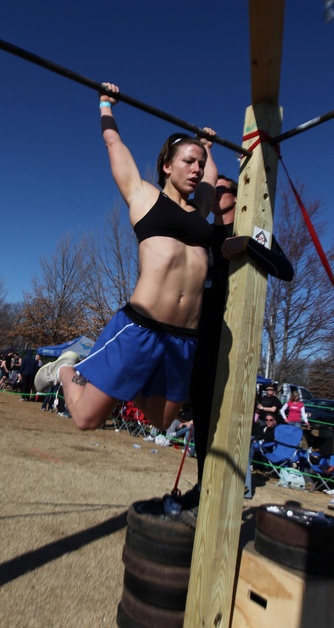 Now, before you get your panties in a bunch, let me just say that there is no such thing as a bad exercise – only the misapplication of an exercise. So, repeat after me. THERE IS NO SUCH THING AS A BAD EXERCISE. The truth is that the effectiveness of an exercise for an intended purpose runs on a spectrum. Some exercises are very effective (and efficient) at helping you achieve certain goals, and some exercises are very ineffective (and inefficient) for helping you achieve certain goals. The lesson is that it always depends on your individual training goals – always.
Now, before you get your panties in a bunch, let me just say that there is no such thing as a bad exercise – only the misapplication of an exercise. So, repeat after me. THERE IS NO SUCH THING AS A BAD EXERCISE. The truth is that the effectiveness of an exercise for an intended purpose runs on a spectrum. Some exercises are very effective (and efficient) at helping you achieve certain goals, and some exercises are very ineffective (and inefficient) for helping you achieve certain goals. The lesson is that it always depends on your individual training goals – always.
On top of that, each exercise has a risk to benefit ratio that also runs on a spectrum. For example, some exercises, while they may be very efficient/effective for achieving a certain goal may have a very high risk of injury associated with them. Kipping pullups and snatches come to mind. They’re both great exercises for the right purpose, but there is a very high risk of injury compared to many other exercises. It just comes with the territory.
So, for each intended training goal or purpose, every single exercise is either optimal (ie efficiently effective), sub-optimal, or somewhere in-between. Also, for each intended purpose, exercises are either high risk, low risk, or somewhere in-between. So, the terms “good” and “bad” aren’t nearly descriptive enough to really define an exercise’s usefulness/practicality/safety/etc. It’s just too vague.
Fortunately, there are a lot of good fitness coaches out there who understand and teach this. And also good for you and I is that we both have marvelous physiology coupled with an incredible intuition that will tell us everything we need to know when we exercise. So, next time you’re exercising, pay attention to that thing you have between your ears!
10 Exercises You Should NEVER Do (Well, at least almost never.)
All that said, here is a short collection of exercises that – in my opinion – are not only usually inefficient, ineffective, and moderate-high risk, but also have a very narrow margin of usefulness. That doesn’t make them “bad exercises” per se, but it does likely mean that it would be a safe bet to avoid them unless you have extremely specific vocational or athletic needs in which the benefits would outweigh the risks.
And of course, if you’re working with a professional who understands the spectrum’s of efficiency, effectiveness, and risk to benefit ratios, then all of this advice is null and void should something they tell you conflict with what I have posted here. Again, every exercise has a purpose given the right context. So, listen to your coach.
Anyways, here’s the list…
1) Abdominal crunches and situps – Although, I can’t point to a specific study (get with the program researchers!), I have seen loads of anecdotal evidence indicating that crunches and situps cause and aggravate lower back problems, among other things. Not only that, but crunches and situps – performed correctly – still over-pressurize your abdomen and even your cranium (aka noggin, coconut, skull, and head) from the particular breathing style (a form of power breathing). You know how your face gets beet red and veins start popping out in weird places? Yep, that’s not exactly a good training habit to keep reinforcing and it’s definitely not good for long-term health. I don’t care how badly you want that six pack!
No, it’s not exactly scientific, but anecdotal evidence counts for something, and I for one, feel much better leaving out these exercises in favor of safer, and more effective, alternatives – especially when my own personal experience validates what I’ve been hearing from others for years.
There are tons of options out there for training core strength, or gasp, even carving out the muscles for a nice six pack if that’s your thing. In most cases, you’re only limited by your knowledge or imagination. One of the better options is the spinal rock exercise. But you can check out this, this, and this for some more core strengthening options.
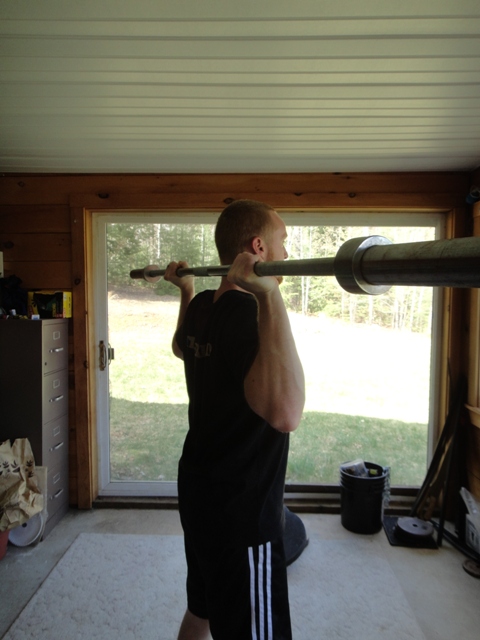
2) Behind-the-neck presses, push-presses, or jerks (barbell, cable, etc.) – Any exercise that brings your spine out of alignment under load is potentially dangerous, and particularly when it’s the neck, which is the most fragile section of the spinal column.
By their very nature, behind-the-neck presses, push-presses and jerks all require the user to thrust their head and neck forward and break spinal alignment, which can result in a muscle strain, pull, tear, or even worse, a spinal disk herniation, among other things like brain cancer (kidding). For some reason, some well-meaning, but unknowledgeable trainees have been fooled into thinking that they’re somehow targeting new muscle groups when doing presses behind their neck. What’s actually happening is you’re likely over-extending your shoulders, over-extending your wrists, and moving your head forward to compensate for a lack of joint mobility and the barbells fixed nature.
So, do your overhead presses with the tool in front of you, like your body was designed to do it, and keep your head and neck neutral. Speaking of which, that’s also pretty good advice for…
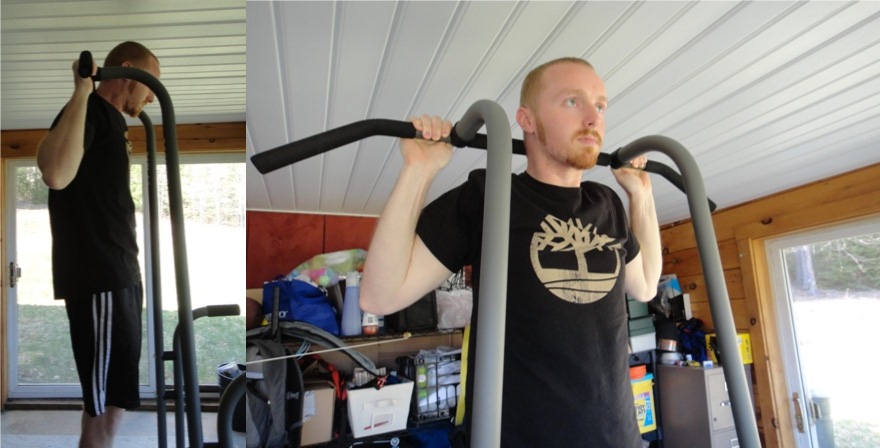
5) Jogging – Yes, jogging. Maybe we’re just talking semantics here, but jogging is actually a terrible way to exercise, and otherwise, travel around. When I think of jogging, I think of someone plodding along at an uncomfortable pace, and also enduring unnecessary discomfort because of poor running technique. And I can usually hear your foot strikes from a mile away.
In most runner coaching programs, there are four distinct paces: walking, trotting, running, and sprinting. Whereas trotting is a relaxed, effortless pace, jogging is an exercise in discomfort and frustration. If you’re a “jogger” and haven’t learned how to run effortlessly, then do yourself a favor and start thinking of running as a skill, not just a conditioning exercise. And here’s a secret: while practicing your running technique, you’ll improve your conditioning at the same time! Remarkable, isn’t it?
And just in case you’re wondering, I had to learn this one the hard way – guilty as charged!
6) Neck bridging – This was never even meant to be an exercise for health and fitness purposes, but is actually a wrestling technique. The problem is that the tiny vertebrae of the cervical spine are too prone to injury from the excessive strain that neck bridging places on them. So, unless you’re a competitive wrestler, I would ixnay on the neck bridging exercise.
A much better alternative for strengthening the neck through a full range of motion is the neck roll. You’ll want to make sure you’ve at least restored the full range of motion of your neck through all the basic ranges before you attempt that one though, and this will be invaluable to that end: joint mobility training system. Remember, incremental progression – baby steps!
7) Overhead barbell shrugs – Anytime you take the shoulder out of packed position under heavy load you are risking shoulder injuries. This risk is further compounded when the arms are extended overhead, into a range of motion that most people are deficient in. The very nature of the overhead barbell shrug raises both of these warning flags simultaneously.
I think that there is a time and place for light resistance training in extreme, and otherwise, sub-optimal ranges of motion – light being the key word. But throwing 100-200 lbs on a barbell and doing overhead shrugs is another story. In this particular case, I think it’s wise to err on the safe side, and stick with the safer alternatives. Besides, any gymnast will tell you that true strength is only possible with packed shoulders.

8) Seated __________ (e.g. curls, presses, shoulder raises, etc.) – We already do enough sitting as a culture, and we know that we know that we know that excessive sitting is very bad for us on multiple levels for multiple reasons. So, while you’re exercising, do yourself a favor and just stand up. You’ll improve your posture, recruit more stabilizer muscles, and otherwise practice a more practical technique. I mean, how bad can it really be?
9) Smith machine – There’s nothing better than an exercise machine that restricts your movements to a fixed axis and limits your potential for growth. Actually, few things are worse! Here’s a newsflash for you: the body doesn’t move in straight lines. It moves in arcs, bends, curves, and in all sorts of other ways.
Even with the bench press exercise (a seemingly “up and down, straight line” movement), if we drew a line through the path that the barbell actually travels, it would form a slightly curved “J” shape. So, anytime a training tool – exercise machine or not – limits your range of motion, it’s a bad thing (ie except in rare cases of medical rehabilitation, etc.).
The smith machine does make a good towel rack, but other than that, I’d pass if I were you. Any comparable exercise with free weights will serve you much better. From a functional training and strength & conditioning standpoint: dumbbells > barbells > machines.
10) Wrist curls (with dumbbells, barbell, cables, etc.) – If this is the only way you know how to strengthen your grip muscles, then shame on you! What have you been reading – FLEX magazine? Your grip muscles have tremendous strength potential, but not from doing these emasculated sissy curls. To put it bluntly, most people can build some pretty freaky grip strength, and often in a short period of time. But you won’t get there from flexing and extending your wrists with tiny dumbbells, or even the heaviest barbell you can hold onto. In fact, you’ll probably develop a bad case of carpal tunnel syndrome while you’re at it.
Grip training is most effective when integrated with the rest of your exercises because the body does not function in isolation. It functions systemically. So, choose exercises that incorporate your grip as part of the greater whole, like pullups, rows, deadlifts, swings, etc. Or, start training with clubbells, kettlebells, or sandbags and let your grip strength come along for the ride.
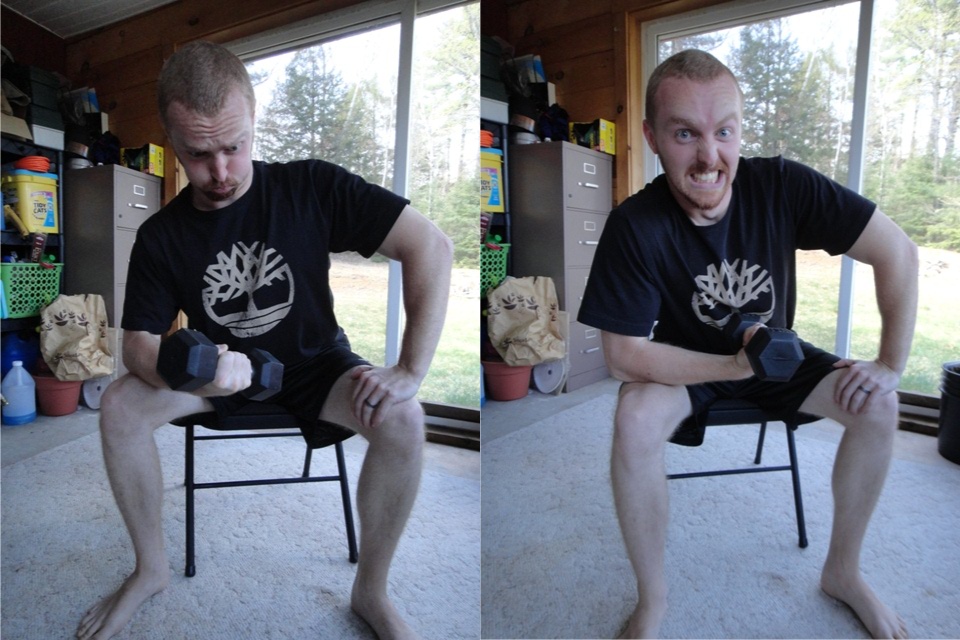
Well, now you’ve gotten a glimpse into some generally inefficient, ineffective, and moderate-high risk exercises. This is good, but it’s not enough to just avoid high risk and improper exercises. And in truth, that’s not where most people go wrong. Where many people go wrong is when they’re using improper technique, or “poor form,” during an otherwise great exercise. Even the best exercises can do more harm than good when used improperly.
So, let this be a reminder that maintaining good exercise technique is of paramount importance regardless of which exercise you’re using. This must become a part of how you train – every single time. I use a scale of 1 to 10, 10 being perfect technique, and I try to keep my technique level at an 8 or higher (self-perceived rating). If my technique drops below an 8, then I’m either done for the time being or I lower the intensity level until I can get my technique back up to par. I’d recommend you model this, or at least do something along the same lines.
And Now, a Truly BAD Exercise
OK OK, you got me. THIS is a bad exercise! That is, unless you’re preparing for a circus act. It’s a Kettlebell Sots Press from a squat atop an INstability ball while simultaneously playing the digeridoo. No, this is not an advanced athletic training method of olympic athletes or an uber-secret training strategy of the U.S. Navy SEALs. It’s just plain… well, you get the idea. Please don’t try this at home…
Too funny!
The lesson: just because you can, doesn’t mean you should! Your physical activity regime should be carefully constructed based on your specific goals. And whatever exercises you do choose, make sure you adhere to sound training principles, like only ever using good technique. Your body will thank you. And with that, I bid you adieu.
Oh, one last thing. Beware of upright rows. A guy at the gym told me it gives him kidney stones.
And speaking of the gym, next time you’re there and you see someone doing one of the above exercises, you now have the right to shake your head and chuckle to yourself. Please send them my way, and I’ll try to set them straight.
If you found this article helpful, please share it with your friends and tweeps:
.jpg)
![]()
CST Coach, CST-KS
Health-First Fitness Coach
P.S. If you liked this post, then please signup for the newsletter, or follow me on Facebook or Twitter for daily updates and other interesting info.
P.P.S. Photo credit: http://www.flickr.com/photos/bionicteaching/
P.P.P.S. So, what do you think? Am I on the right track or have I fallen completely off my rocker? Please let me know what you think in the comments.
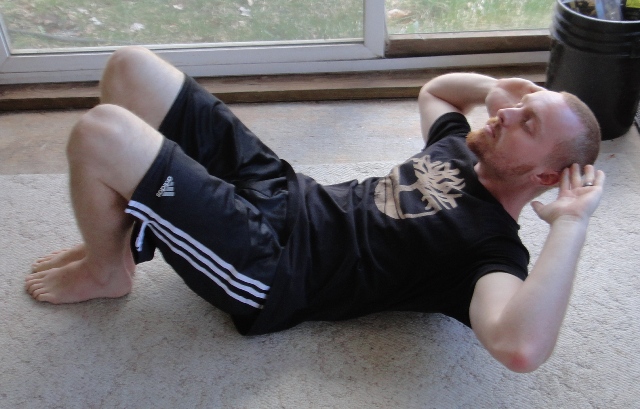
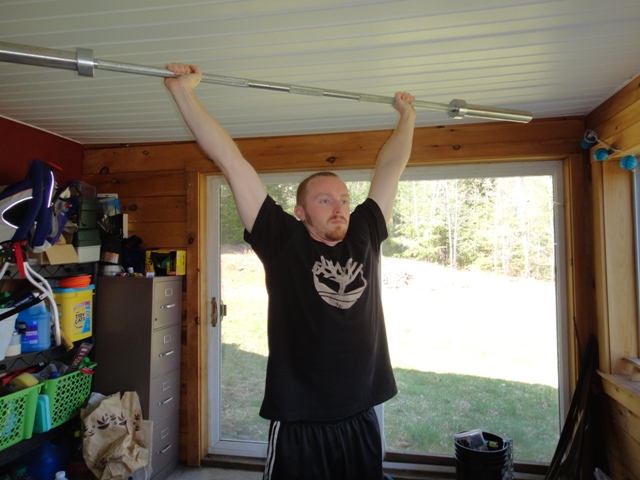
Those photos in #10 are priceless. :-)
Great list. Totally agree. And I’ve never commented before so I’ll say it now — THANKS for all you do! I look forward to each and every post.
Regards,
Renee
(Clubbell Newbie and CST Instructor Wannabe)
Thanks for de-lurking, Renee! And best of luck with your clubbell training and CST aspirations. Let me know if I can be of any assistance.
I use the smith machine all the time at my gym – for pullups and chinups. Lets me focus on my technique, make sure my arms aren’t too far apart, and I’m not curving my back too much. Other than that, though, I’d have to agree with you.
It also works great for bodyweight rows. I got a lot of use out of one particular smith machine back in my gym-going days.
Was heading to the gym when I stopped to read this. I caught my attention on FB. Thanks for the information and laughs. So I’ll kill the elliptical warmup and opt for hills on the treadmill to get my heart going. And then I’ll skip the lat pull downs and crunches…….go for some planks and pushups (mental note to self: keep elbows tucked in) instead and sometime or another I need to research your site for information on how to trot NOT jog.
I didn’t know there was so much to learn!! Wish I lived closer! Thank goodness for the internet. Great information abounds if you know who to trust and where to find it.
The Granola Farm Girl aka “DairyQueen”
Thanks Cyana – always nice to have you here!
When you’re ready to learn the skill of trotting (ie effortless running) start here:
https://physicalliving.com/learn-the-skill-of-barefoot-running/
Great article. I agree with most of what was said. I have creaky knees and found that through (very painful) experience that running is actually gentler on my knees than jogging. The elliptical is overrated for cardio cos our movements are propelled by momentum especially when the resistance is low. I really need to crank up the resistance on the elliptical to feel the burn on my legs.
David, Your experience with jogging is quite common. It’s all about the technique. Humans are born knowing how to run naturally, but not necessarily optimally. Thanks for reading!
Especially crunches and situps gave me pain in my back, I can only do it if I keep de movement very restricted and keep my back bend a bit.
You’re not the only one, Herman – very common, and it’s too bad that people think they need to crunch to build a strong core, which was actually designed to resist rotation (in all three planes of movement).
No situps? What about Be Breathed by Scott Sonnon?
The spinal rock series as taught in Be Breathed is actually quite different from traditional situps. They may look similar, but there are nuances in the breathing, structure, and movement that make the spinal rock a health-first option to replace situps. Done correctly, spinal rocks can help strengthen your spine, remove the risk of lower back pain, and prevent over-pressurization of the body during the exercise.
“Everyone”, at least in the paleo/crossfit community, seems to despise the elliptical because of its unnatural movement pattern, but at the same time I see many recommendations to ride a bike. I’m wondering what’s the difference really?
Love, Love, Love this list! I was a little worried when I saw Jogging as a headline until I read the full post. Too many people have such poor running mechanics that it’s no wonder running leads to so many injuries. I also couldn’t agree more with you on the elliptical, smith machine, and the seated exercises. I’m glad I stumbled onto your site. I’m excited to read more of the content!
What do you think of that “hang-upside-down” contraption advertised (relentlessly) on TV?
If you want evidence that situps/crunches are bad for your back look up research by Dr. Stu Mcgill. There’s a lot of research on this topic.
I’d say you are right on everything but the Elliptical. This machine does much more good than bad, and gives many a very good cardio workout. I personally use the Elliptical on a daily basis (almost) and never have had any ill effects only some awesome benefits and I’m talking many years of use